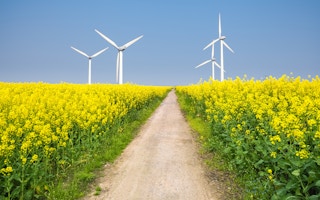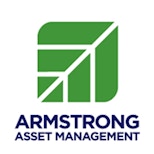With more companies, funds and endowments planning to divest from fossil fuels, the role of renewables as a key energy source has never been more important.
According to the United Nations Environment Programme (UNEP), in 2014, more than US$270 billion was invested in green energy projects and infrastructure, mainly in solar and wind energy. In June, the US$900 billion Norwegian Government Pension fund, one of the largest in the world, announced that it would begin selling its coal assets which are worth about US$8 billion.
While this figure seems significant, experts say more investment will be needed; the International Renewable Energy Agency (IRENA), a consortium of 139 countries set up in 2009 to promote sustainable use of renewable energy, said in a report last September that more than US$550 billion will need to be spent every year on renewables by 2030 to prevent global temperatures from rising an additional 2 degree Celsius.
Rising popularity of green bonds
As investment in clean energy increases, many organisations are turning to the bond market to raise funds for such projects. Green bonds are ‘green’ because they’re issued to raise funds for climate change projects; these might range from clean energy to energy efficiency projects to climate change adaptation ventures such as flood defences.
Over the past few months, large financial institutions including Morgan Stanley, ANZ, ABN Amro and Bank of America have issued their own green bonds and have raised a combined US$2.11 billion to invest in renewable energy and energy efficiency projects.
According to the credit ratings agency S&P, the green bond market has been growing at an unprecedented pace, with global issuance tripling from US$10.6 billion in 2013 to US$36.6 billion in 2014. Market observers estimate that total issuance of green bonds could even reach US$100 billion this year.
Besides the growing urgency to address climate change, one key reason behind the growth of green bonds is the low cost of funding for companies.
“Bonds are the cheapest form of capital,” said Sean Kidney, chief executive of the Climate Bonds Initiative, a UK-based non-profit group working to mobilise bonds as the chief source of funding of climate-related projects.
“Companies can opt for equity financing or bank loans but these options cost more. The cost of equity could be as high as 8 to 10 per cent, depending on the deals’ structure and where they are based,” he said.
Morgan Stanley’s US$500 million fixed rate notes, which mature in 2018 and will invest in green projects, will pay 2.2 per cent interest per annum. Meanwhile, ABN Amro’s five-year euro-denominated green bond has a fixed annual coupon rate of 0.75 per cent and is rated A2/A. The funds will go towards paying for solar panels on residential projects as well as financing energy-efficient commercial buildings in Europe.
In Asia, companies are also slowly waking up to the attractiveness of green bonds. The Export-Import Bank of Korea was the first Asian institution to launch a green bond in February 2013 with a US$500 million issuance.
In 2014, Taiwan’s Advanced Semiconductor Engineering issued US$300 million of green bonds while the Development Bank of Japan became the first Japanese entity to sell a green bond and raised 250 million euros from investors.
Export-Import Bank of India sold US$500m of green bonds in March this year.
Thiam Hee Ng, senior economist at the Asian Development Bank’s economic research and regional cooperation department, noted that the Asian green bonds market will be supported by developed economies, such as South Korea and Japan, who already have the existing infrastructure to support a vibrant bond market.
But Ng highlights that the bulk of growth in the green bond sector is expected to come from emerging Asian economies, like India, which harbour ambitions to grow its renewable energy sector and foster an active bond market.
Another huge potential market for green bonds is China, where the China Banking Regulatory Commission has an active policy of growing the market for securitisation as it expands the financing options for investors as well as companies, Kidney said.
Right now, most of the bonds in China are issued by the government and state-owned companies. For a market to mature, there needs to be more financial instruments and more participants - namely, private companies.
“China is already the second largest bond market but 93 per cent of the trading activity is interbank,” Kidney said. “We will see new regulations concerning green bonds, I believe, within the next 12 months from Chinese regulators. We think that by 2018, China will be the biggest green bond market in terms of annual issuance.”
The advent of yieldcos
Another relatively new financing structure that’s generating some buzz is the ‘yieldco’.
A yieldco works much like a real estate investment trust (REIT) in the property sector; it is a separate entity that has been spun off by a parent company to own renewable and/or conventional power assets that have predictable cash flow.
While REITs generate cash through rental income, yieldcos get this cash flow from tariffs paid to them for generating energy. Like REITs, yieldcos distribute cash each year or each quarter to shareholders in the form of dividends. What’s attractive about this pay-out is that shareholders get a regular, low-risk return – also known as yields – which has the potential to increase over time as more assets are added to the listed yieldco.
For the project developers, capital raised from the initial share sale can be used to pay off debt or finance new projects at interest rates lower than those available through equity or loans. Such structures are extremely attractive to project developers as it provides them the opportunity to transfer large liabilities out of their balance sheets and provides an opportunity to generate liquidity from typically illiquid assets.
Project developers are not the only ones excited about developments in the yieldco space.
“The development of yieldcos will expand the number of exit options available to infrastructure funds,” said Andrew Affleck, managing partner of Armstrong Asset Management, a Singapore-based clean energy asset manager.
“This also opens up opportunities for infrastructure funds to play the role of an aggregator of smaller projects which large yieldcos are unable to purchase on their own due to the mismatch in scale,” he added.
The first yieldco was created and listed on the Toronto Stock Exchange in 1999. Originally listed as Great Lakes Hydro Income Fund, Brookfield Renewable Energy Partners went public with three hydroelectric facilities in Western Quebec with a combined capacity of 238MW.
Since then, several more yieldcos have gone public including Canada’s TransAlta Renewables, the United States’ Hannon Armstrong, Pattern Energy Group and NRG Yield. These own mostly wind power assets, although NRG Yield’s portfolio includes eight utility-scale photovoltaic power (PV) plants and two portfolios of distributed solar assets.
More recently, US firms First Solar and SunPower jointly listed a new yieldco called 8point3 Energy Partners and began trading on 19th June on the Nasdaq at US$21 per share.
New era for RE financing
The yieldco structure does not yet exist in Asia. Despite the fact that Asian economies are seeking to expand their financial offerings and diversify their capital markets, it may be some time before theyieldco structure gains popularity amongst investors in Asia.
Nick Duan, Chinese solar analyst for Bloomberg New Energy Finance, said that the current biggest obstacle to the yieldco structure in Asia are regulations.
“
We will see new regulations concerning green bonds, I believe, within the next 12 months from Chinese regulators. We think that by 2018, China will be the biggest green bond market in terms of annual issuance.
Sean Kidney, CEO, Climate Bonds Initiative
Since yieldcos are a stock, Duan noted that listing them in any market will require compliance with local regulatory requirements and this frequently requires a company’s to adapt its legal structure, accounting and reporting methodologies to list on local stock exchanges.
Yieldcos have grown in other parts of the world because of their favourable tax structure. “There’s no reason yieldcos can’t work in Asia,” Kidney said. “But the governments have to want to adopt the structure and give tax breaks to yieldco companies to get them going first.”
“From a policy perspective, if it looks like a good idea then governments will need to kick-start it.”
Other challenges that are unique to yieldcos include local investor demand and currency risk, ADB’s Ng said.
“Because yieldcos are dividend-paying instruments, it matters if there is a local demand for such stocks. If yieldcos’ operating assets are located in a different market, currency and exchange rate risk comes into play as cash flows need to be transferred between markets,” he said.
Some Asian governments also restrict the flows of capital out of their countries, Duan added. This may make repatriation of any funds difficult, particularly in China, which has coincidentally the largest installed renewable energy base in the world.
Another hindrance to the development of yieldcos could be something as straightforward as the lack of renewable energy assets in the region that can be bundled into a company, Ng said.
“A yieldco is built around projects that are mature and are usually backed by power purchase agreements with a government or company,” he added. “I can imagine a yieldco in perhaps China, where there are enough projects. Not so much or at least not yet for the rest of the region.”
However, there have been signs that the yieldco structure may finally be coming to Asia – in April, China’s JinkoSolar confirmed that it is pushing ahead with plans for a listing abroad for its development unit.
Sindicatum Renewable Energy, which is headquartered in Singapore and develops, owns and operates renewable energy projects in South and South East Asia, has also announced that it confidentially submitted a draft registration statement to the U.S. Securities and Exchange Commission relating to the proposed initial public offering of a yieldco vehicle.
Also, US PV group SunEdison is reportedly launching its second yieldco, which will own renewable-energy assets in emerging economies including China, India, Brazil, Peru, South Africa and Uruguay.
As the new yieldco structure is tested in Asia, for the moment at least, Ng notes that green bonds may be the more appropriate vehicle of financing for the renewable energy sector in Asia in the interim and Yieldcos will eventually have its role to play.
“I can envisage a future where a company uses green bonds to raise funds, say US$100 million, to build a project, and when the plant is running and it’s making nice money, the company can spin it off in a yieldco to pay off the bonds,” Ng said.
“It can go hand-in-hand.”












